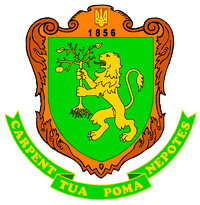HARMFUL ENTOMOCOMPLEX OF THE APPLE ORCHARD
Keywords:
fruit crops, orchard structure, sucking pests, leaf-chewing pests, carpophages, phytosanitary monitoringAbstract
The apple tree is the main fruit crop cultivated in Ukraine. Despite the gradual reduction in the area of fruit-bearing apple orchards, the gross yield of apples is increasing due to the rising productivity of the crop. This is facilitated by modern apple cultivation technologies. However, orchard plantations create a favorable environment for the development of harmful organisms due to the long-term monoculture cultivation of apple trees. To reduce pest-related losses, integrated pest management systems are used, with phytosanitary monitoring of orchard conditions serving as their foundation. The aim of this research was to determine the species composition of pests in fruit-bearing apple orchards at the Educational and Scientific Centre of Lviv National Environmental University in 2023–2024. Monitoring results revealed a predominance of insect pests from the orders Homoptera and Lepidoptera. During the budburst stage, adult apple blossom weevils, bud weevils, and apple leaf cutters caused damage to the apple orchard. During the flowering phase, the most harmful pest was the apple blossom weevil, whose larvae destroyed bud contents, leading to direct crop losses. During the fruit development stage, aphids were the most numerous, especially the green apple aphid, whose infestation levels in 2024 reached up to 85% of young shoots of some trees. The woolly apple aphid also became widespread, with colonies found even on the surface and inside the fruits. Among the leaf-chewing Lepidoptera, the most widespread species was the grey fruit-tree case moth. Among carpophagous pests, the apple fruit sawfly and codling moth were detected, although the infestation of apple fruits by their larvae was insignificant.
References
Chernii A. M. Problems of phytosanitary rehabilitation of the fruit‐tree agroecosystem. Protection and Quarantine of Plants. 2014. No 60. P. 482–502. URL: https://zkr.ipp.gov.ua/index.php/journal/issue/view/6/60-pdf (Accessed: January 16, 2025)
Cropping areas of agricultural crops by their types. (n.d.). State Statistics Service of Ukraine. URL: https://www.ukrstat.gov.ua/ (Accessed January 16, 2025)
Plant Production of Ukraine, 2022. State Statistics Service of Ukraine. 2023. 183 pp. URL: https://ukrstat.gov.ua/druk/publicat/kat_u/2023/zb/09/zb_rosl_2022.pdf (Accessed January 16, 2025)
Stankevych S. V., Zabrodina I. V., Vasyliieva Yu. V., Turenko V. P., Kulieshov A. V., Bilyk M. O. Monitoring of pests and diseases of agricultural crops: a textbook. Kharkiv National Agrarian University named after V. V. Dokuchaiev. Kharkiv: FOP Brovin O. V, 2020. 624 p.
Turenko V. P. Protection of apple orchards from major pests. Scientific Progress & Innovations. 2023. No 26 (4). P. 60–65. https://doi.org/10.31210/spi2023.26.04.11
Vasyliiev S. V. Apple core pests under intensive cultivation technology. Bulletin of Kharkiv National Agrarian University. Series “Phytopathology and Entomology”. 2018. No (1–2) P. 16–22. URL: https://repo.btu.kharkov.ua/bitstream/123456789/19673/1/Vkhnau_ento_2018_1-2_5.pdf (Accessed January 16, 2025)
Vlasova O. H., Zatserkliana M. D., Vlasova M. O., Serdiukova M. M. Monitoring of species composition and abundance of insects and mites on apple in the Right-Bank Forest-Steppe of Ukraine. Phytosanitary Safety. 2023. No 69. P. 27–35. https://doi.org/10.36495/PHSS.2023.69.27-35
Yakovenko R. V., Demianiuk O. S., Synenko D. I., Chepurnyi V. H., Lysaniuk V. H. The problem of soil fatigue in apple monoculture. Balanced Nature Management. 2023. No 3. P. 121–128. https://doi.org/10.33730/2310-4678.3.2023.287826
Zhuk V. M., Barabash L. O., Kryvoshapka V. A., Boldyzheva L. D. Efficiency of growing promising apple cultivars bred by the Institute of Horticulture of NAAS in intensive orchards. Bulletin of Agrarian Science. 2022. No 2 (827). P. 34–41. https://doi.org/10.31073/agrovisnyk202202-05

